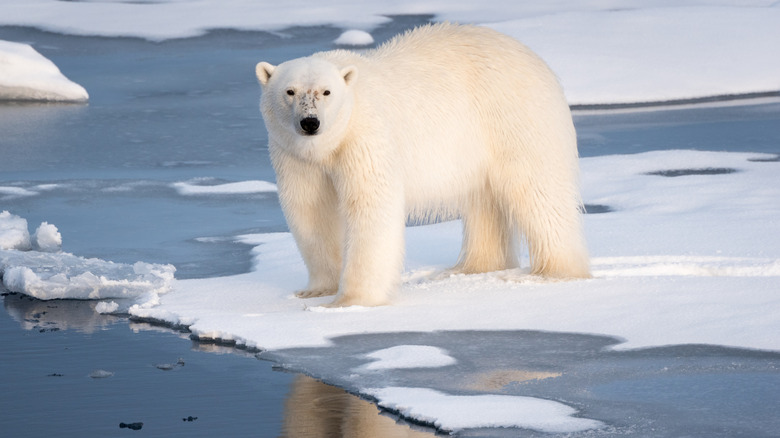The Abandoned Building A Few Arctic Polar Bears Call Home
Many of Earth's creatures find ways to adapt to changes in their environment, from the subtle shifts in migration patterns due to climate change to the more remarkable, such as the strange changes affecting the dogs of Chernobyl. For one team of wildlife experts on a rare expedition through Russia's remote Wrangel Island, an adorable and pleasant surprise occurred: Polar bears had made a home in an abandoned weather station and its accompanying buildings, which had been unused since 1992.
Wrangel Island is a remote and vital site for the Arctic's biodiversity and one of the few places on Earth where large populations of polar bears can still be found. Professional photographer Dmitry Kokh detailed the finding in his article for The Guardian, where he and the wildlife experts encountered the curious community: "One day, bad weather is expected and the captain approaches a small island, Kolyuchin, to take shelter from the storm," after landing and taking shelter, he further noted, "The stormy wind and rain and the neglected buildings on the rocky shores all serve to make everything happening seem surreal. Suddenly, we notice movement in the windows of the houses. Someone takes out some binoculars and we see the heads of polar bears."
The home-owning bears were a truly remarkable experience for Kokh. However, the photographer learned from Russian polar bear expert Anatoly Kochnev that the congregation of polar bears reflects a tragic contrast: The building satisfies the bears' natural curiosity while also serving as a means of protection from the human hunters they have come to fear. Although the polar bear population on Wrangel Island offers a sanctuary, the effects of human presence can still be felt.
Polar bears are highly threatened animals due to climate change and human activity
The fantastic photos that Dmitry Kokh captured during his rare trip to the Wrangel Island nature reserve at the start of 2022 provide a fascinating and adorable glimpse into a world that many will never see. However, the polar bear remains one of the most threatened animals due to climate change and human interaction. These changes result in multiple impacts on polar bear habitats that threaten the species, including diseases, shrinking habitats, and disruption of food sources due to shipping disturbing seals. Direct interaction with people also poses a potential danger, especially when trying to figure out how to respond to a bear when a pet dog is involved.
A 2020 study published in Nature Climate Change suggests that by 2100, polar bears may exist in only a few isolated pockets of subpopulations. Growing concerns are evident in the Southern Beaufort Sea, which spans Alaska and Canada's Arctic territories, where only 819 bears are estimated to remain as of 2025. Compared to the Chukchi Sea area, which includes Wrangel Island, the estimated number of bears is around 2,937. These low numbers highlight that now is a more critical period than ever to push for a future where the polar bear can thrive. Dmitry Kokh's photography highlights the duality of the polar bear's natural beauty as well as its need for protection.
For more articles on conservation efforts, check out the amazing animals that survived near-extinction and made a comeback.

